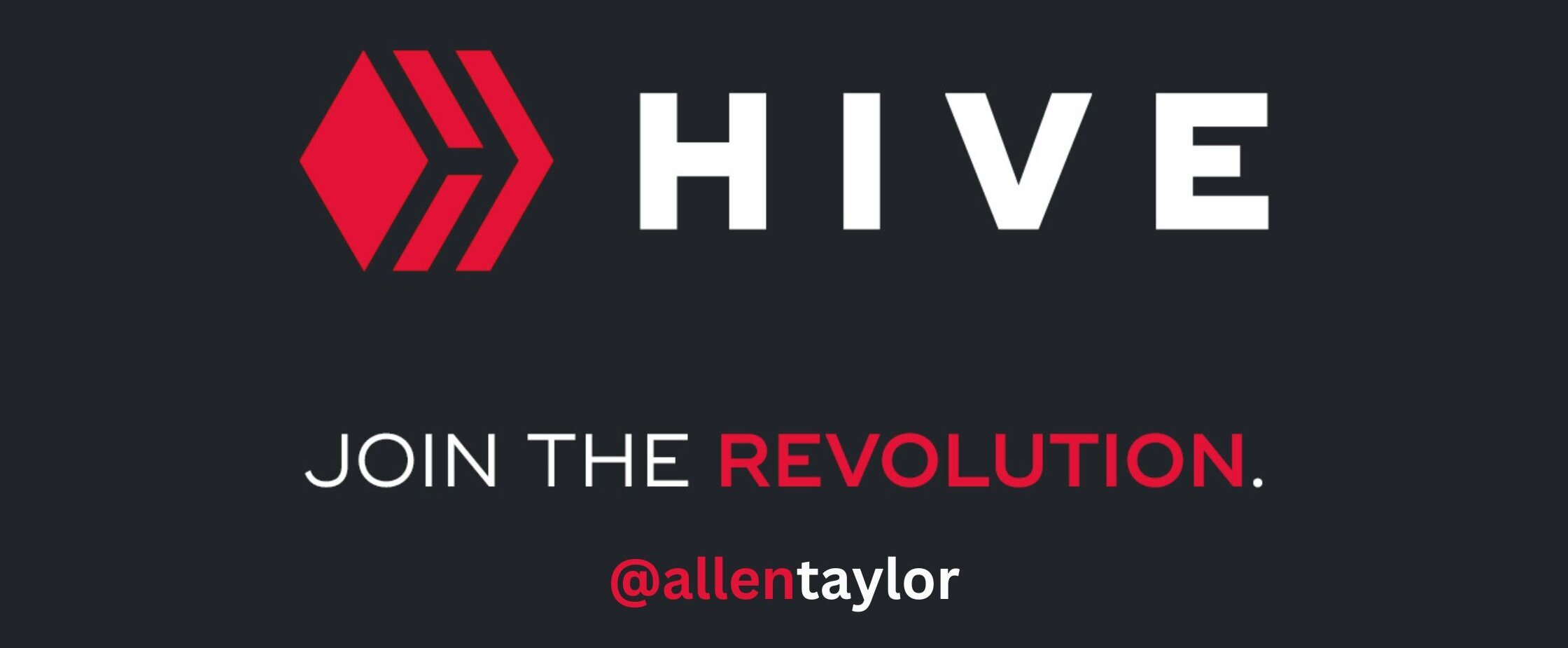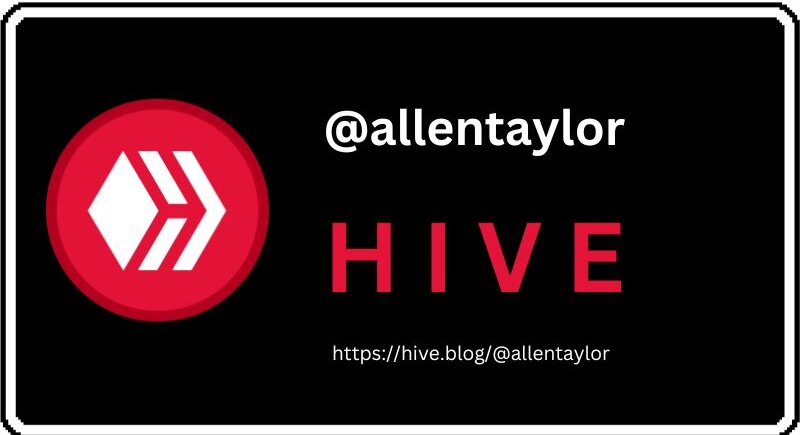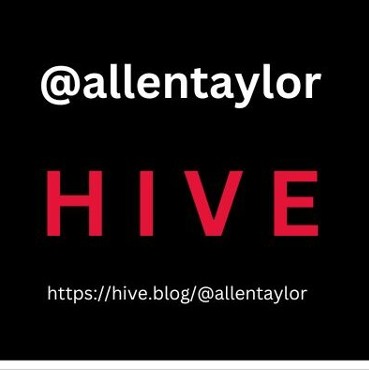Collect this post and receive 500 Taylor tokens.
Regular readers of this newsletter know I am sold on Hive. I like Web3, for the most part, but so much of what calls itself Web3 isn't really Web3. It's become a buzz word, something founders and developers say about themselves in an attempt to sound cool, but when you check under the hood, many of these projects are anything but Web3. They may be nominally Web3, but they do not adhere to Web3 principles.
Hive, on the other hand, meets Web3 principles head on and delivers.

So, what are these Web3 principles that I am talking about? Here are three specific Web3 principles that Hive absolutely delivers on where other so-called Web3 social media platforms fail.
Decentralization - Decentralization is relative. Some projects are more decentralized than others, but many Web3 projects claim to be decentralized when they are clearly not. For instance, they may call themselves a "decentralized social media platform" while implementing a waitlist for new users, who must give up an email address in order to be notified that they can then use the platform when the appointed time has come. Here's a clue: If they have a waitlist, it's not decentralized. Hive doesn't make anyone wait to join, and you don't have to give up your email address. While the governance mechanism is delegated proof of stake, which is less decentralized than pure proof of stake, Hive is sufficiently decentralized that calling it decentralized is as truthful as it gets. It beats all other so-called decentralized Web3 social media platforms hands down.
Censorship-resistance - Another Web3 principle that often gets bastardized is the idea of censorship-resistance. Several so-called Web3 platforms have ways for users to be kicked off the platform should they violate certain "terms of service." Hive doesn't. The mechanism for cleaning up undesirable content on Hive is the downvote button. While it has become somewhat contentious within the Hive community, the downvote button serves a useful purpose. On Hive, there is no entity, no person, no group of persons, who can take away your right to publish your content. You cannot be shadow banned, demonetized, or de-platformed. Your account is your account and it is secure.
Self-monetization - Hive also provides a path for content creators to monetize their content through its rewards system. Whether you create videos, write long-form blog posts, share short-form content, or post images and memes, there is at least one front end publishing interface that allows you to publish the content you desire and monetize it. Hive even has a couple of NFT platforms as well as a method of creating personal or branded tokens. The Hive blockchain also includes several gaming communities that allow users to monetize their game assets. Hive even has a dapp that gives users the ability to create a branded e-commerce marketplace. In short, users have several ways to monetize their activities on the Hive blockchain.
The 5 Things I Like Most About the Hive Blockchain
There are several things to like about Hive. The following list are the five things I list most about the blockchain, and just to be clear, I am coming from the perspective of a content creator who has been creating content online, either full-time or part-time, since the mid-1990s. The World Wide Web has become a major part of my life and I've been an online creator for the better part of three decades.
Now that I've aged myself, here are the 5 things I like most about the Hive blockchain and Web3 social media platform:
The ability to earn rewards for doing what I love - Over the years, I've tried various revenue sharing opportunities and none of them have panned out to be worth the time it took to create content for those platforms. I've posted to Medium and have managed to earn some hefty rewards for some of my articles, but most people don't earn much on Medium. Hive's ability to reward content creators is different. It isn't based on sharing ad revenue, nor is it based on a limited pool of money where creators are paid with a portion of subscriber fees. Rather, Hive's reward mechanism creates monetary rewards out of thin air using blockchain technology, which means there is an unlimited supply of potential rewards. The downside to this is that HIVE is an inflationary cryptocurrency. While that may sound undesirable, HIVE's inflation decreases over time, which leads to a higher valuation of the cryptocurrency long term. Still, because of the nature of the rewards pool, content creators can be confident that their contributions to the blockchain and the community have the potential to earn them real rewards far into the future.
No one can delete my account - Hive accounts are secured by several combinations of public-private key pairs. Using a weighted hierarchy of four different key pairs, every user can be confident that their account is secure. Only one person has access to your private keys .... You! In other words, because both the private key and the public key must be used to initiate a transaction on Hive, no one else may access your account settings or delete your account. Each key pair has a specific function related to Hive transactions. Owner keys, or the master key, is used to generate new keys and recover accounts should it be necessary. Active keys are used to manage wallets and vote for governance. Posting keys are used to create and publish new content. Memo keys are used for decrypting encrypted messages on Hive's memo function. While there is no such thing as 100 percent all-around security, the Hive blockchain uses the most effective security protocols to secure accounts and no one other than an account's owner possesses private keys to an account, making it impossible for a centralized entity to take control of an account for any purpose. Just to drive the point home, Hive accounts are not tied to email addresses, nor do they use two-factor authentication methods to prove account owner identity. If you have access to the keys, you have an account. Plain and simple.
I have total control over the content I see - On Hive, there is no algorithm defining the content that I see. No computer program analyzes content I've engaged with in the past to determine what content I see in the future. I have total control over the content that I see, and I like it that way.
There are multiple front ends from which I can post my content - With multiple front ends, I can choose how I interact with the Hive blockchain. Each front end has its own unique features that allows me to pick the one best suited for my content and personal preferences. Video creators can use 3Speak, Vimm, or HiveTube to post their video content. Bloggers and text-based content creators, like me, can use the Hive.blog interface or one of the front ends such as Peakd, Ecency, or InLeo (rebranded from LeoFinance). There are Hive front ends for travelers, fitness buffs, visual content creators, social sellers, gamers, sports enthusiasts, short-form content creators, and more. When a user posts from one of the many front ends, that content is always visible on the primary platform, Hive.blog, and may be visible on other front ends. This posting choice is one of the best benefits of Hive's decentralization.
Creators have flexible options that include dapp creation, token creation, and content curation - Creators come in all shapes and sizes. Developers can become witnesses or create their own front ends or dapps. Anyone can create their own token or smart contract on Hive Engine. Creators can post videos, images, blog posts, memes, and more. And anyone can earn rewards on Hive without creating content at all by simply curating the content that others post. This is one of Hive's most powerful features.
As I stated above, there are many more things to like about Hive, but these are my five favorite things. As a content creator, Hive allows me the opportunity to monetize my content in a censorship-resistant and decentralized environment. Learn more about Hive by reading its whitepaper.
Are you on Hive? What is your favorite Hive feature? Let me know in the comments below.

Learn more about Web3 social media from my book Web3 Social: How Creators Are Changing the World Wide Web (And You Can Too!).

Collect this post and receive 500 Taylor tokens.


